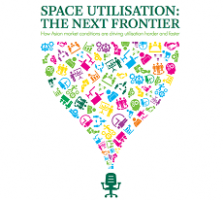January 22, 2016
Digital media is having ‘largely positive’ effects on professional lives 0
 The digitization of content and data, along with new digital communication technologies, has fundamentally changed the way work gets done, and affected the nature of the employment relationship. While it has a largely positive impact on peoples’ lives, including individuals’ ability to find work, learn and develop skills, and balance work and life, it can, in some cases, lower worker productivity and increase inequality. These are among the key findings from Shaping the Future Implications of Digital Media for Society – a report by the World Economic Forum conducted in collaboration with Willis Towers Watson and presented at the WEF 2016 annual meeting in Davos. In the study, which included a survey of more than 5,000 digital users from five of the world’s most important markets; Brazil, China, Germany, South Africa and the US, over half (56 percent) reported digital media has transformed the way they work, and two-thirds said digital media has improved their ability to do work.
The digitization of content and data, along with new digital communication technologies, has fundamentally changed the way work gets done, and affected the nature of the employment relationship. While it has a largely positive impact on peoples’ lives, including individuals’ ability to find work, learn and develop skills, and balance work and life, it can, in some cases, lower worker productivity and increase inequality. These are among the key findings from Shaping the Future Implications of Digital Media for Society – a report by the World Economic Forum conducted in collaboration with Willis Towers Watson and presented at the WEF 2016 annual meeting in Davos. In the study, which included a survey of more than 5,000 digital users from five of the world’s most important markets; Brazil, China, Germany, South Africa and the US, over half (56 percent) reported digital media has transformed the way they work, and two-thirds said digital media has improved their ability to do work.
































December 10, 2015
When performance management really can produce positive results 0
by Stuart Hearn • Comment, Knowledge, Workplace
(more…)